Single innervation
At many of the organs single innervation of either sympathetic or parasympathetic divisions are present and produce predominant effects.
Only sympathetic innervation
Liver
At liver only sympathetic system acts through β2 and α1 receptors and increase glycogenolysis increasing the breakdown of glycogen to glucose. It is obvious that under stressful conditions our body requires more energy and hence sympathetic system acts on liver to produce more glucose.
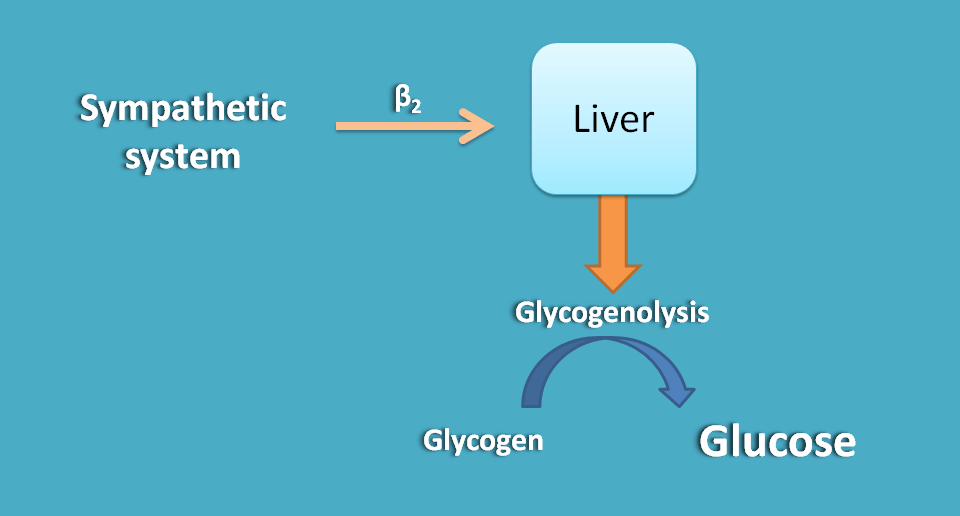
At the same time, parasympathetic system has no innervation on liver and therefore no effect on blood glucose levels. Suppose if it is operating and has opposite effect, your blood glucose levels should fall when you are under rest !!. But it's not happening. Remember that excess glucose levels are required only under exercise or stressful conditions where sympathetic system only acts.
Adipose tissue
Adipose tissue is rich in lipids which again act as rich source of energy. Sympathetic system increases lipolysis by β2 and β3 receptors breaking lipids which can then act as source for conversion into glucose.

Again here parasympathetic system has no innervation and no effect.
Kidney
Under hypotensive conditions, sympathetic system is activated acting on kidney to release renin. This renin by sequential steps can increase the formation of angiotensin II (AT II), a potent vasoconstrictor leading to raise in blood pressure.
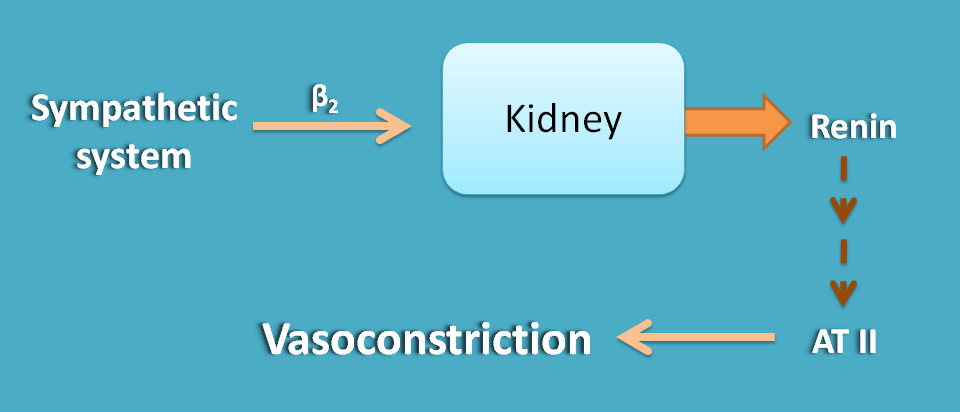
Sweat glands
Even sympathetic system is only acting at sweat glands, the action is produced by parasympathetic mediator acetylcholine. Sympathetic system increases sweat secretion by acting on M3 receptors and dissipates excess heat generated under stressful conditions.
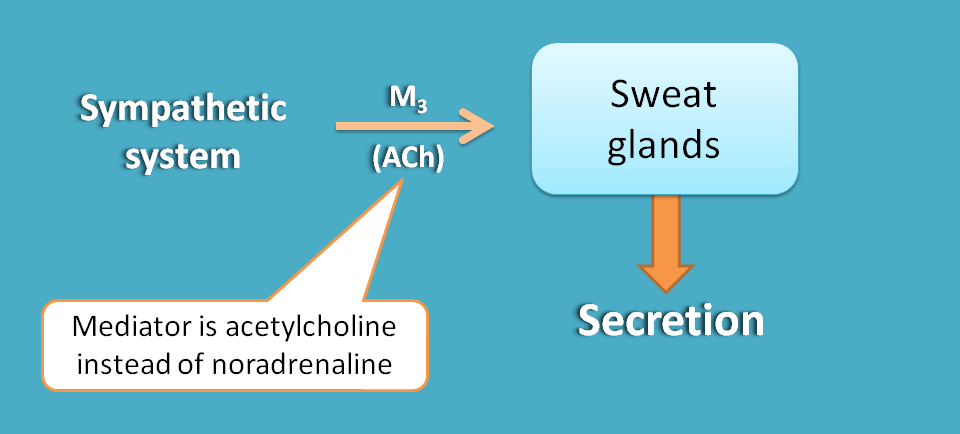
Adrenal medulla
One more important organ where sympathetic activation significant is adrenal medulla. Here again the mediator is acetylcholine and receptors are nicotinic acetylcholine receptors (nAChR). Sympathetic system increase the release of large amount of adrenaline and a small amount of norepinephrine.

Blood vessels
The picture at blood vessels is somewhat different. Blood vessels are expressed with both α1 and β2 receptors former producing contraction and later relaxation. In majority of the blood vessels α1 receptors are predominating producing vasoconstriction and raise in blood pressure. At blood vessels supplying liver and skeletal muscle, β2 receptors are predominating producing vasodilatation and increasing blood supply.
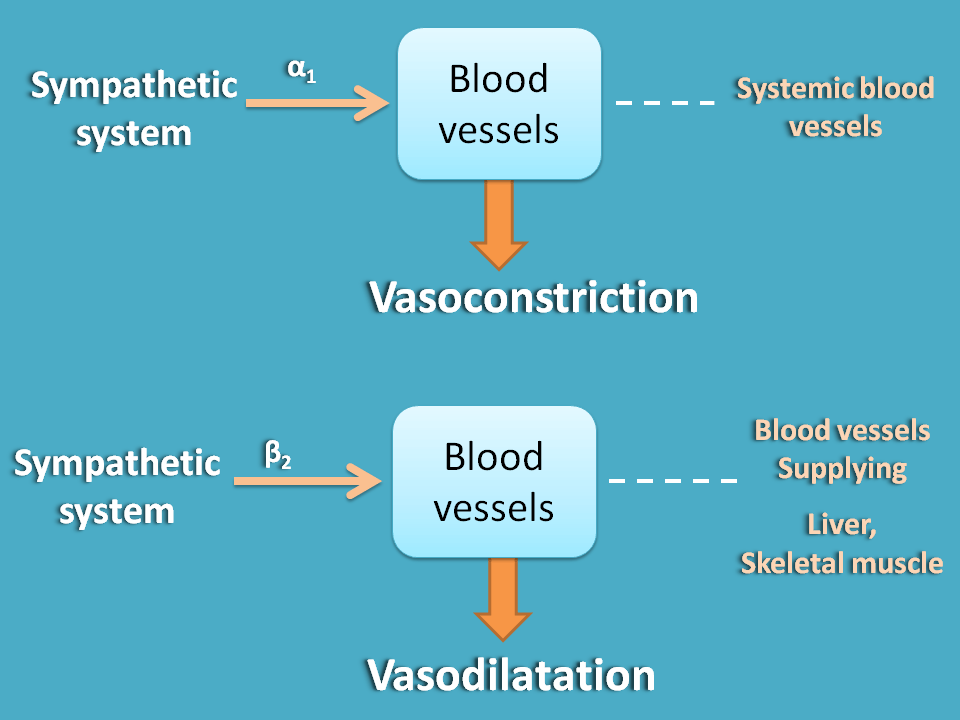
Parasympathetic system has no direct innervation on vascular smooth muscle but still it can produce vasodilatation mediated by nitric oxide. Parasympathetic fibers end at vascular endothelium and release acetylcholine. This acetylcholine then acts on M3 receptors present on endothelium which release nitric oxide. The released nitric oxide then activates cGMP producing relaxation.
All the actions can be summarised below.

Only parasympathetic innervation
Bronchioles
Parasympathetic system produces bronchoconstriction by acting through M3 receptors. It also increases bronchial secretions.
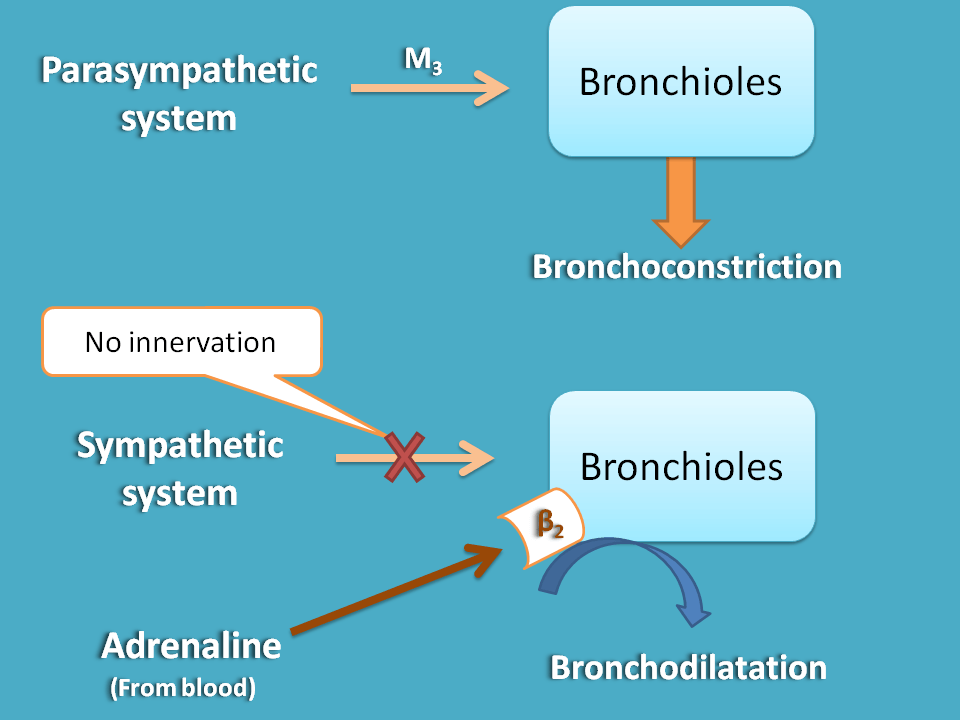
Sympathetic system has no direct innervation on smooth muscle. But still β2 receptors are present on bronchioles which are activated by epinephrine circulating through the blood. Once activated they increase cAMP and produce bronchodilatation.
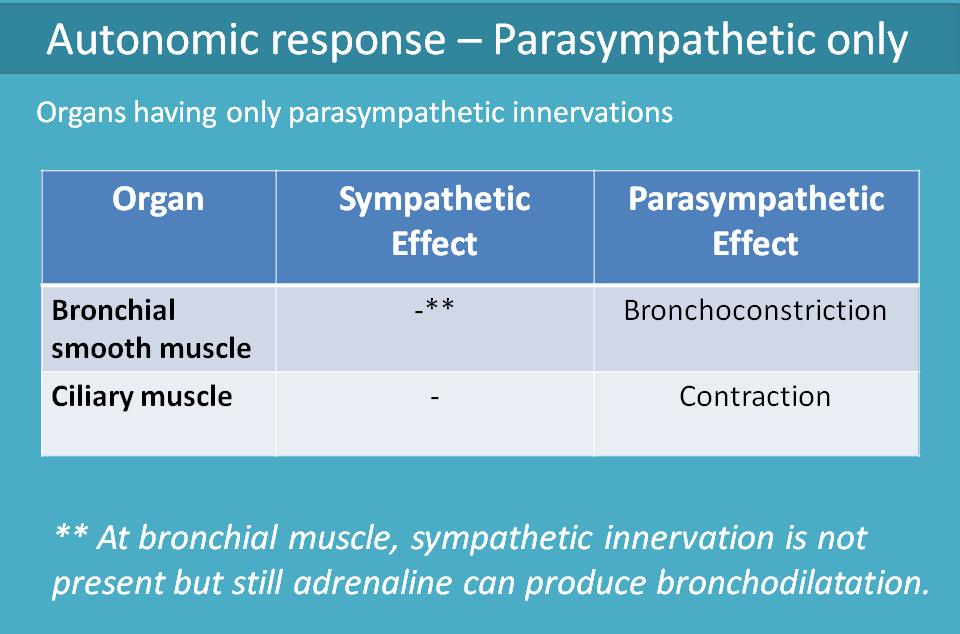
That’s about the picture of functional roles of sympathetic and parasympathetic divisions.
If only one type of innervation is present how the homeostasis can be maintained?
Yes, we have to think of it. Let’s take two instances.
- Bronchioles are constricted by parasympathetic system where sympathetic system has no innervations. (see in the group
- Blood vessels are constricted by sympathetic system where parasympathetic system has no innervations
In these two situations, homeostasis is maintained by indirect effect.
For example, in bronchioles circulating epinephrine acts on β2 receptors and produces bronchodilatation. Similarly in blood vessels, acetylcholine acts on M3 receptor on endothelium which release nitric oxide and produce vasodilatation. This is also an indirect effect.